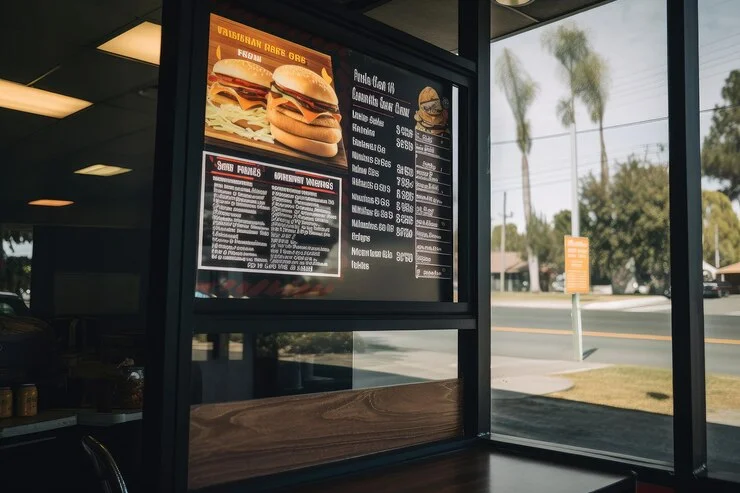In today’s digital age, restaurants continuously seek innovative ways to enhance customer experiences and streamline operations. Enter digital menu boards—dynamic, interactive displays that have revolutionized how menus are presented and accessed. In this comprehensive article, we’ll delve into the world of digital restaurant menu boards, exploring their functionalities, benefits, and profound impact on the dining landscape.
Chapter 1: Introduction to Digital Restaurant Menu Boards
Digital restaurant menu boards are electronic displays used to showcase menu items, specials, promotions, and other information within a restaurant setting. These displays utilize cutting-edge technology to present menu content visually appealingly and interactively, providing customers with a more engaging dining experience.
Chapter 2: Advantages of Digital Restaurant Menu Boards
- Enhanced Visual Appeal: Digital menu boards allow restaurants to showcase their menu items with high-resolution images and dynamic animations, capturing customers’ attention and stimulating their appetites.
- Real-Time Updates: Unlike traditional printed menus, digital menu boards can be updated instantly, enabling restaurants to showcase daily specials, seasonal offerings, and price changes in real time.
- Increased Efficiency: Digital menu boards streamline restaurant operations by eliminating the need for manual menu updates and reducing printing costs. This allows staff to focus more on providing excellent customer service than managing printed materials.
- Improved Customer Experience: With digital menu boards, customers can easily browse menu items, view images, and access additional information such as ingredient lists and nutritional facts, enhancing their overall dining experience.
Chapter 3: Implementation of Digital Restaurant Menu Boards
- Hardware Selection: Choosing the right hardware, including displays, media players, and mounting systems, is crucial for successfully implementing digital menu boards. Screen size, resolution, and durability should be considered when selecting hardware.
- Content Creation: Designing engaging and informative content is key to maximizing the impact of digital menu boards. Restaurants should work with graphic designers or utilize content creation software to create visually appealing menus that effectively showcase their offerings.
- Installation and Placement: The proper installation and strategic placement of digital menu boards ensure maximum visibility and accessibility. Boards should be positioned in high-traffic areas where customers can easily see them without obstructing the flow of foot traffic.
- Staff Training: Training staff on how to use and manage digital menu boards is critical for successful implementation. Staff should be familiar with the system’s features and functions to assist customers and address any technical issues that may arise.
Chapter 4: Case Studies and Success Stories
Nento Digital Signage: By implementing digital menu boards, Nento Digital Signage saw a significant increase in sales and customer engagement. The visually appealing displays allowed them to effectively showcase their seasonal specials and promotions, resulting in higher customer satisfaction and repeat business.
Chapter 5: Future Trends and Innovations
- Integration with Mobile Ordering: With the rise of mobile ordering, we can expect to see increased integration between digital menu boards and mobile platforms, allowing customers to place orders directly from the display using their smartphones.
- Personalized Recommendations: Advances in data analytics and artificial intelligence may enable digital menu boards to provide customized recommendations based on customer preferences and past ordering history, further enhancing the dining experience.
- Interactive Features: Future digital menu boards may incorporate interactive features such as gesture control and augmented reality, allowing customers to interact with menu items in new and exciting ways.
Conclusion: Embracing Innovation in Dining
In conclusion, digital restaurant menu boards have revolutionized how menus are presented and accessed in the restaurant industry. With their enhanced visual appeal, real-time updates, and interactive capabilities, digital menu boards transform the dining experience for customers and restaurant owners. As technology continues to evolve, we can expect to see even more exciting innovations in digital restaurant menu boards, further enhancing the way we dine out in the future.





